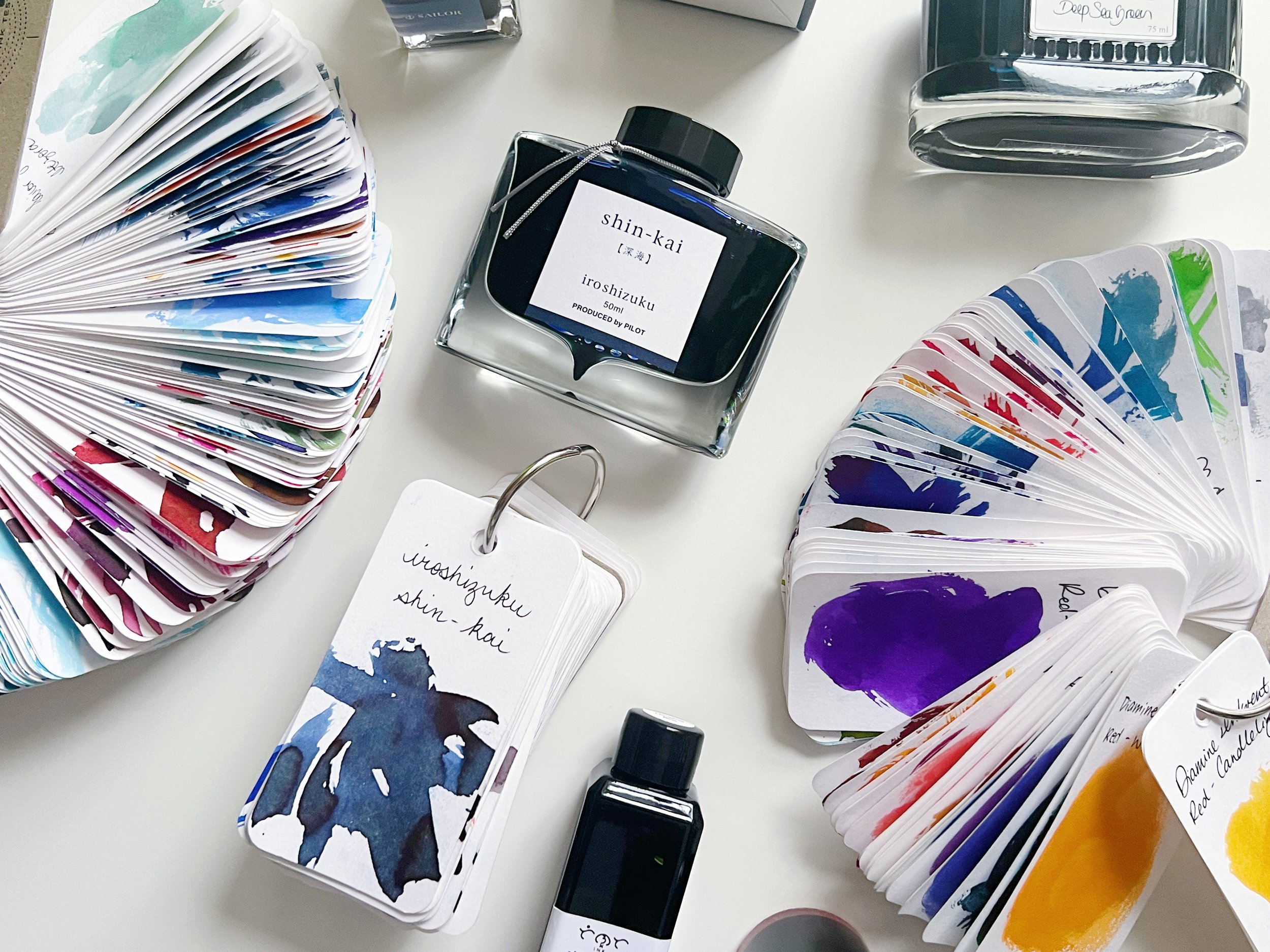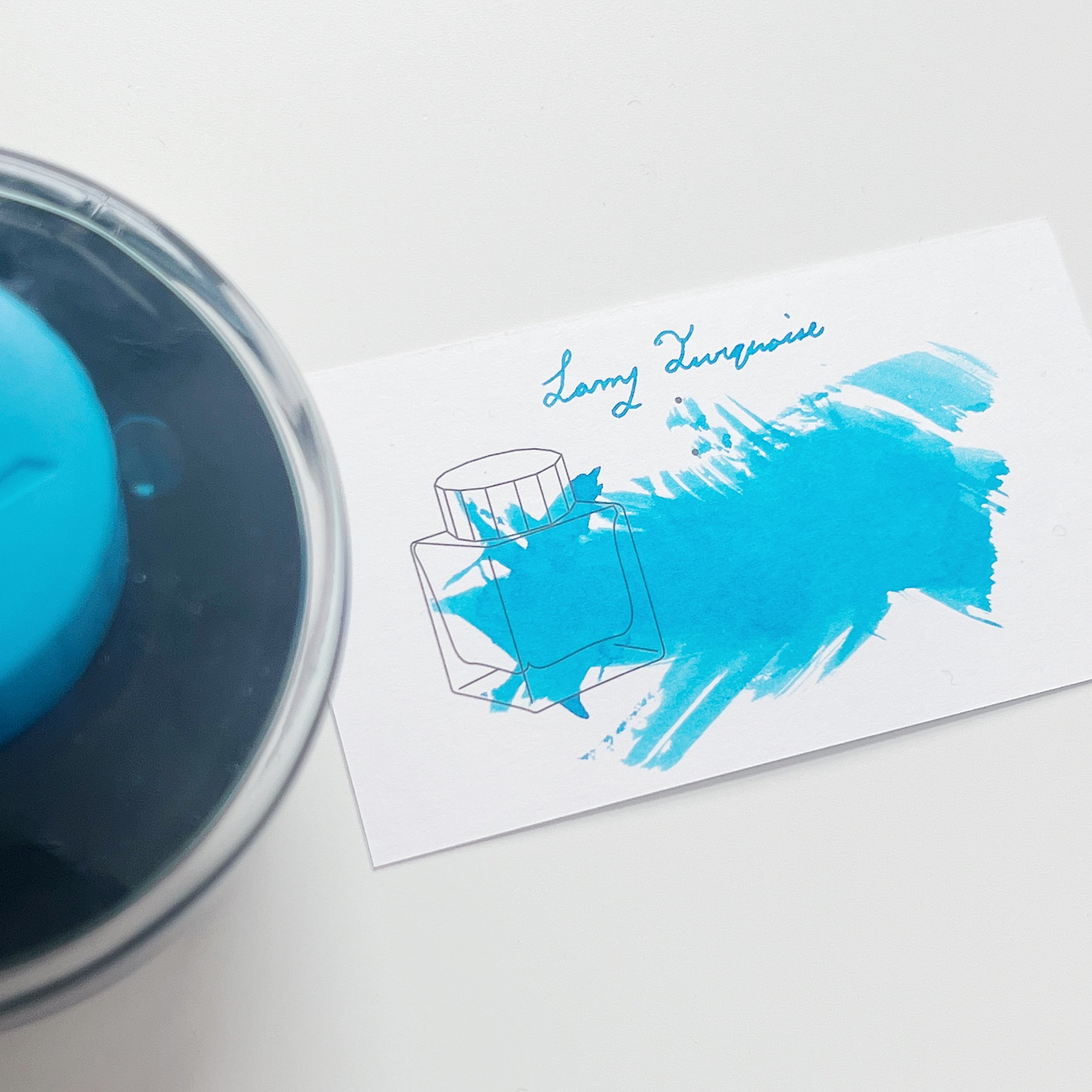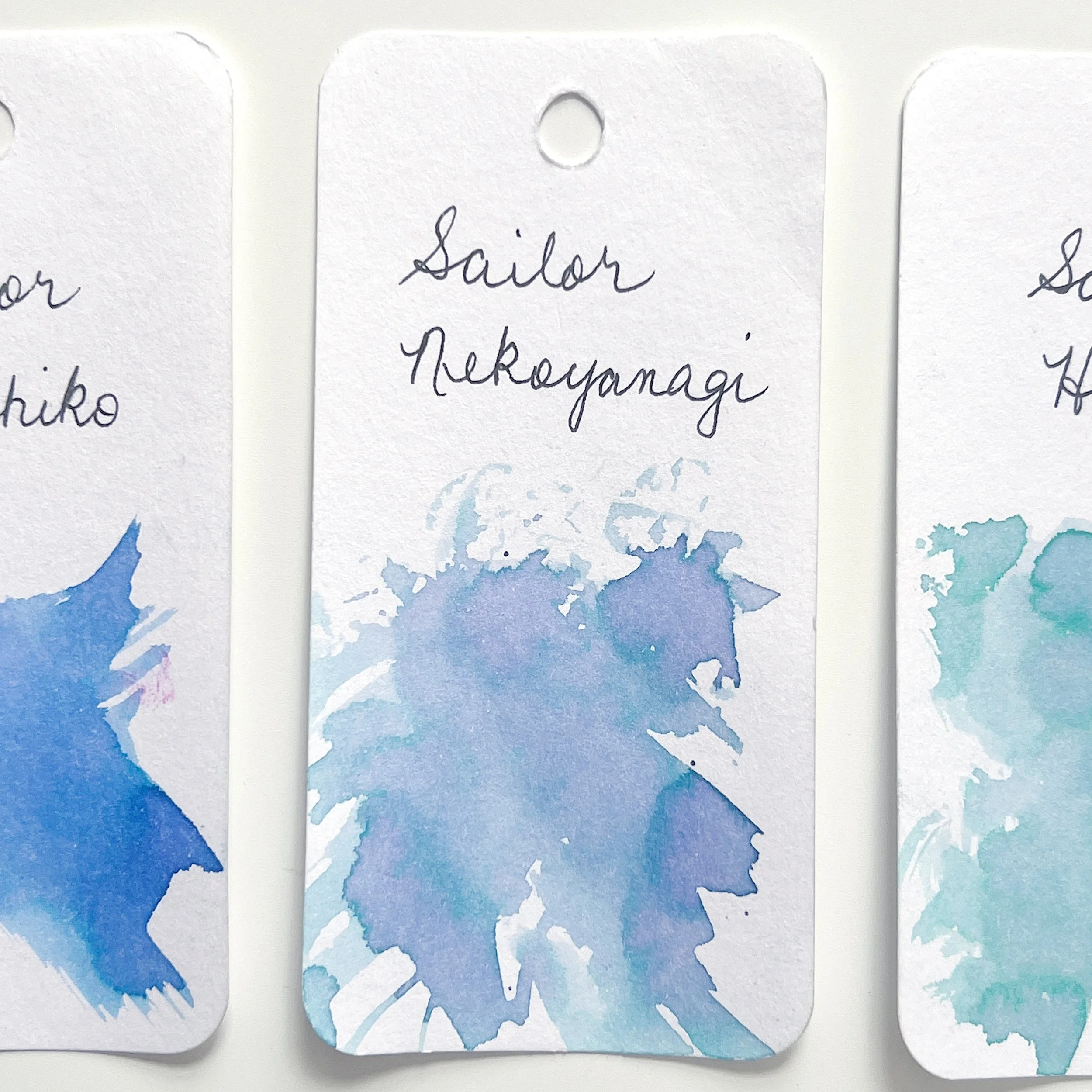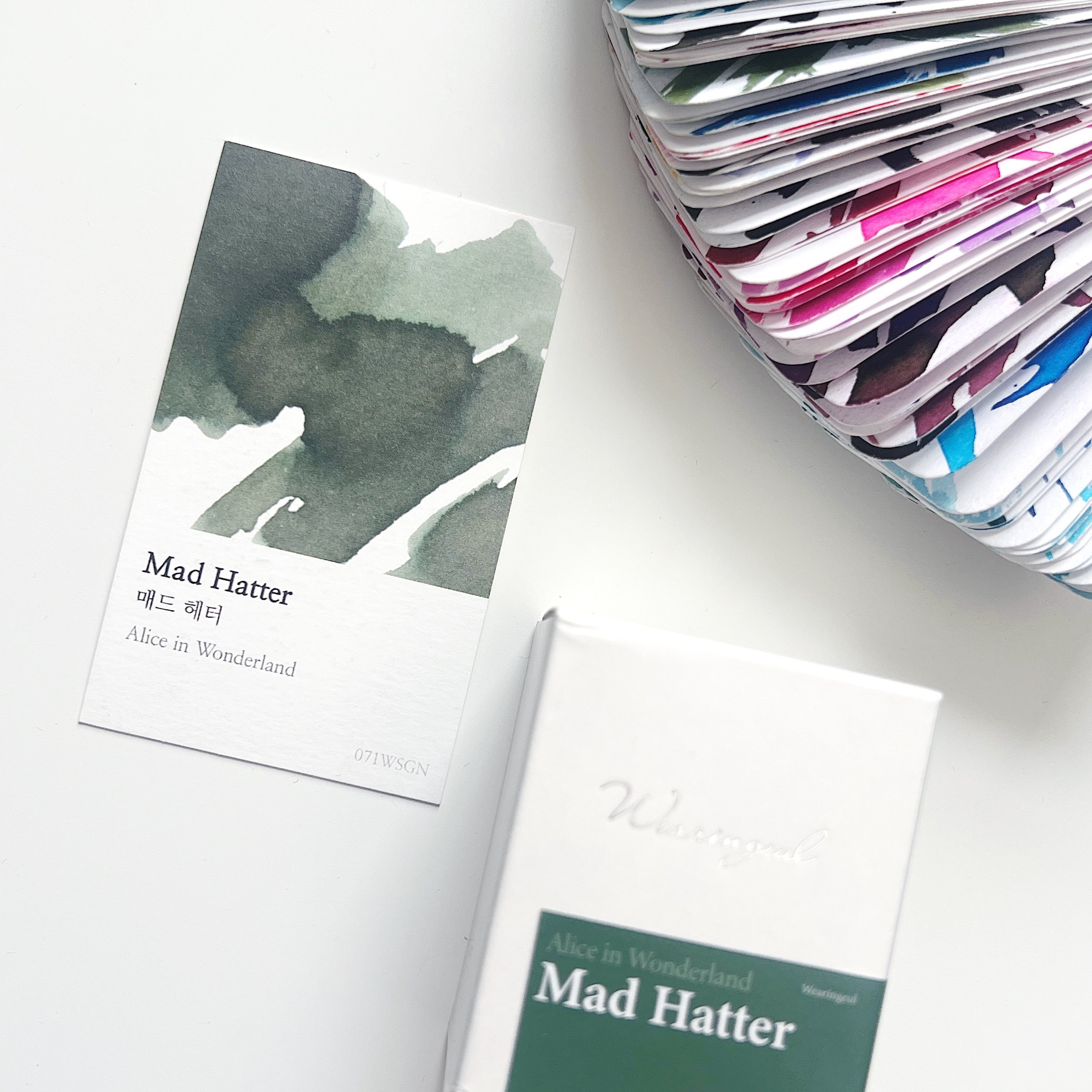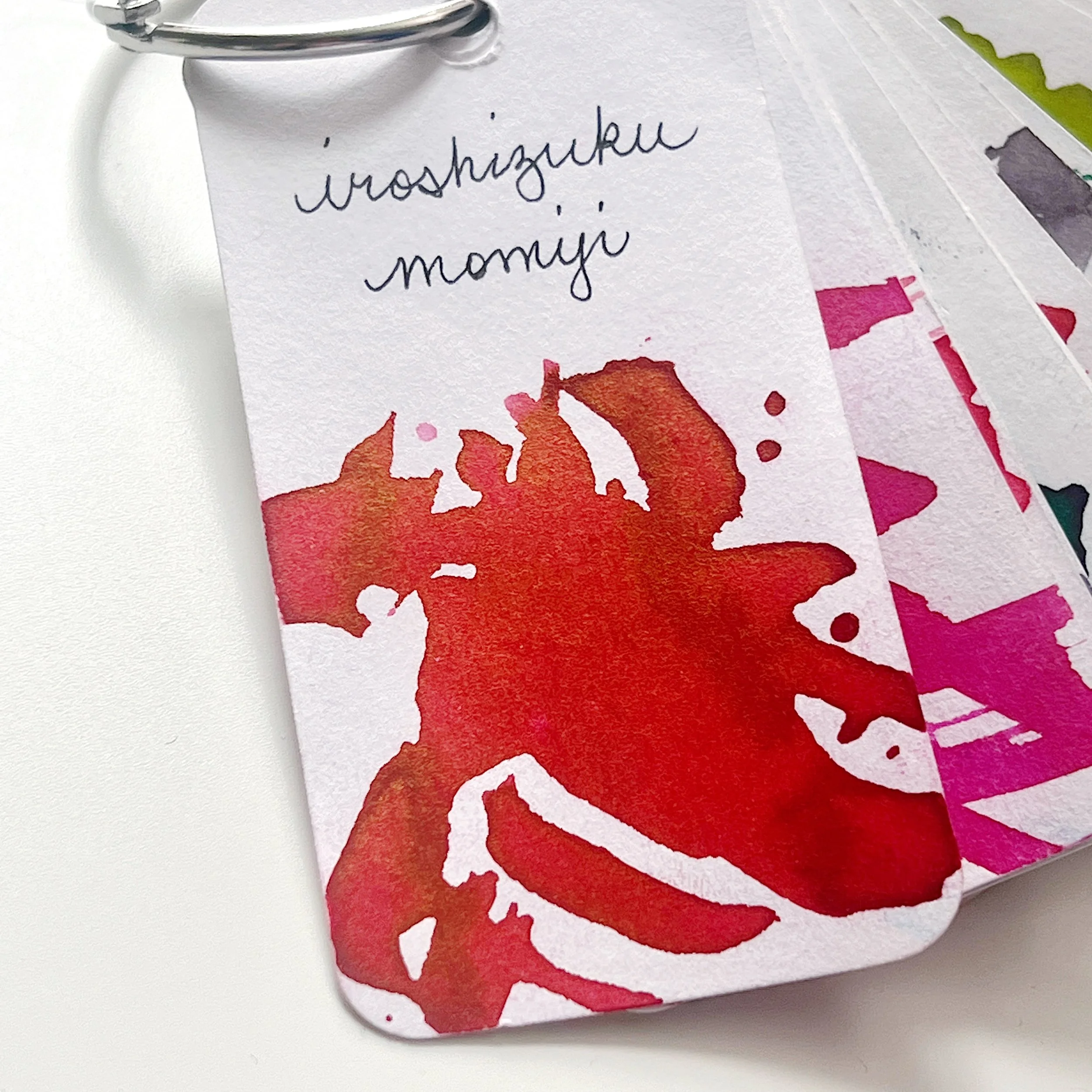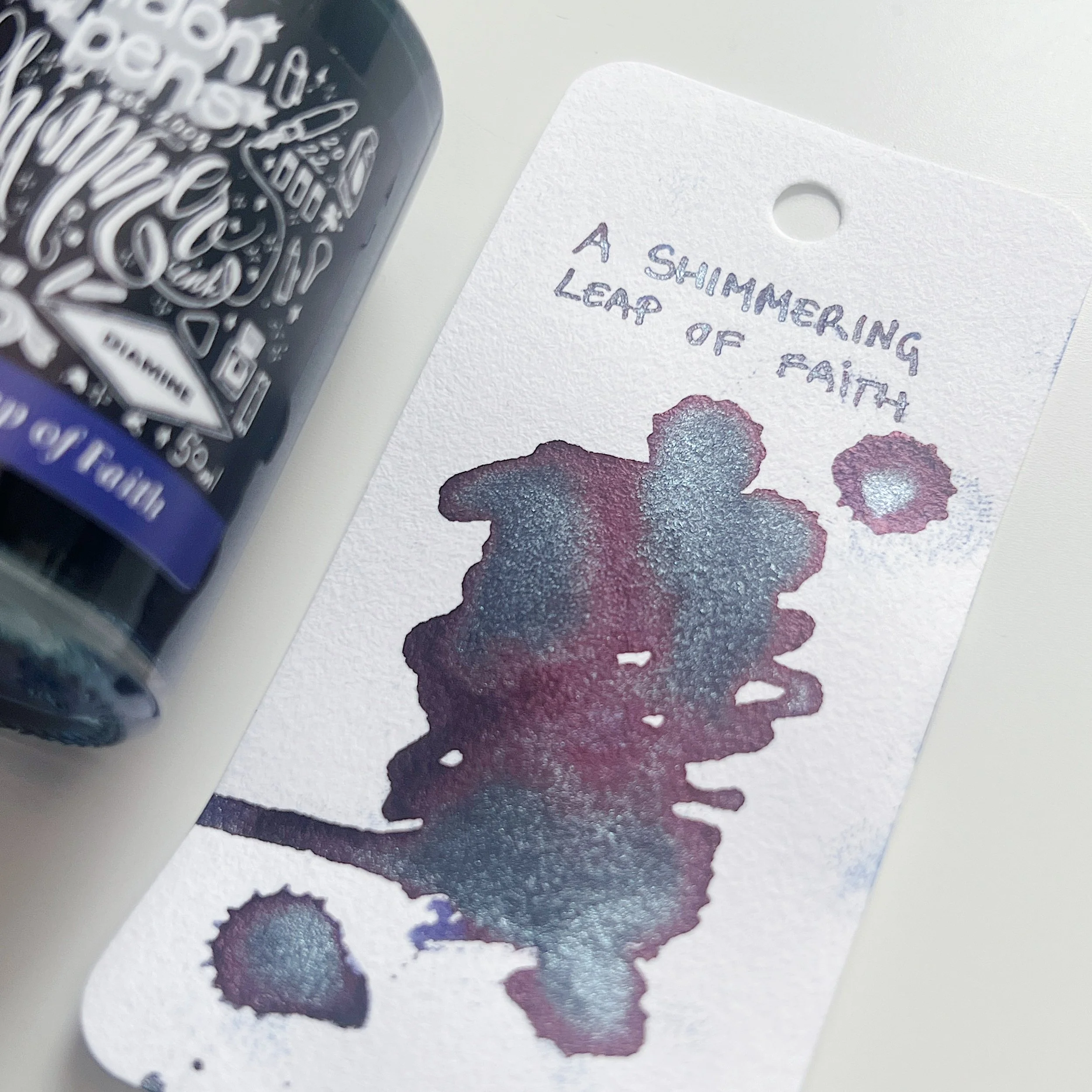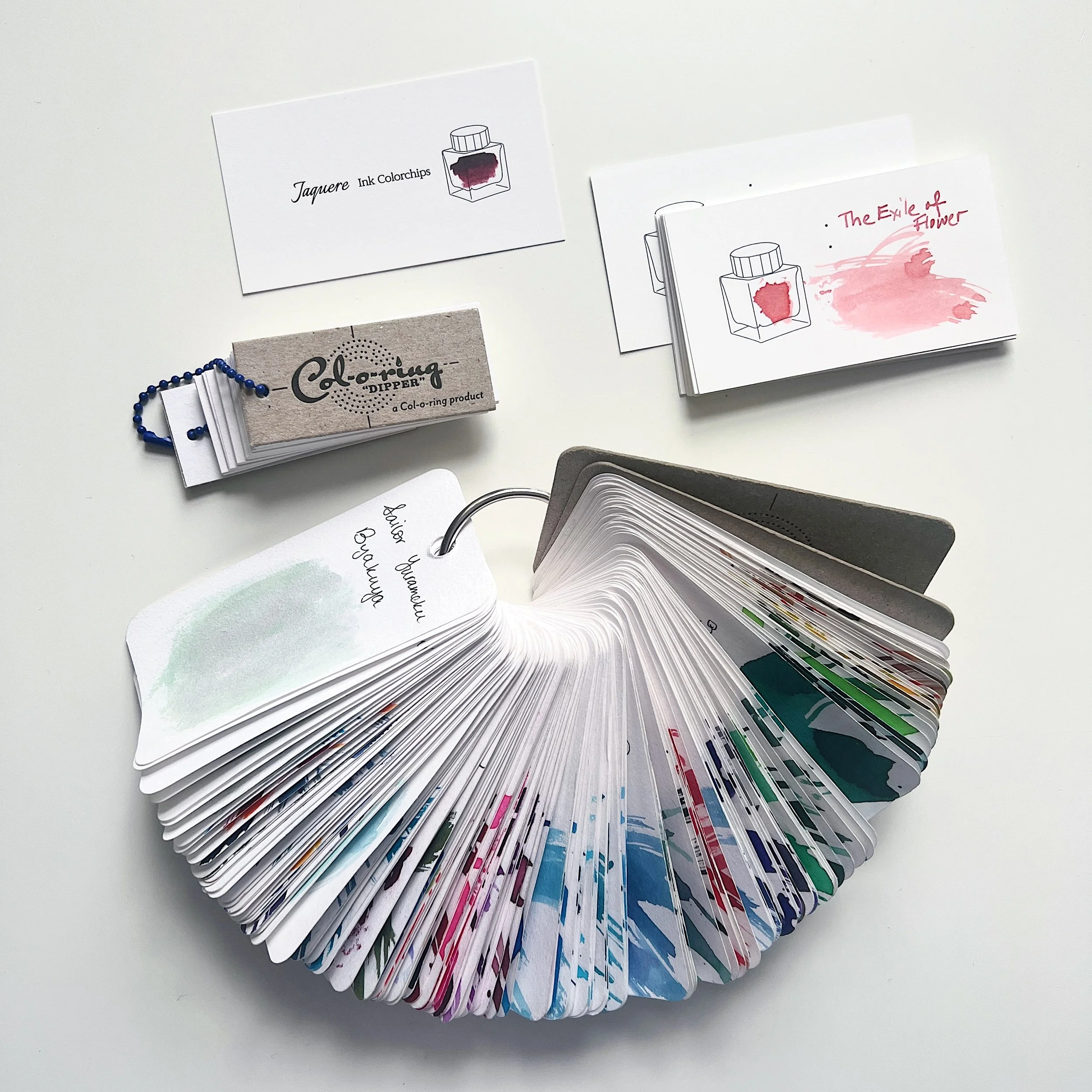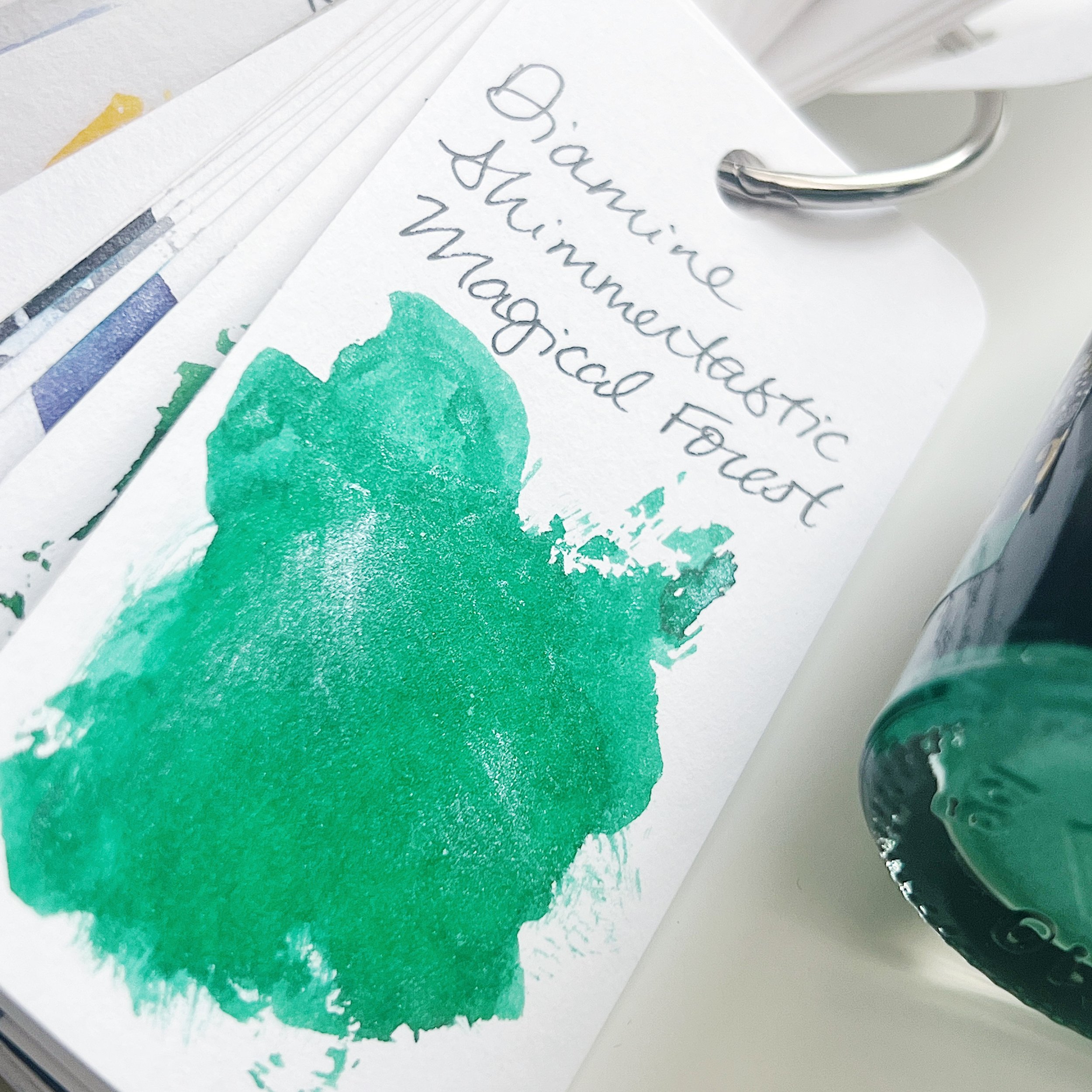A Beginner's Guide to Fountain Pen Inks
One of the advantages of using a fountain pen is the ability to fill up your pen with ink from any colour of the rainbow. Unlike a conventional ballpoint or rollerball pen which tends to only have refills available in a standard black or blue, fountain pen inks can be found in thousands of colours—everything from deep maroon reds and lush forest greens to dreamy pastel purples and soft muted greys. This not only brings a lot of fun to activities like journaling or letter writing, but is also immensely useful if you prefer to use colours to organize information in your notes.
In this blog post, we are going to take a deep dive into all things fountain pen inks.
Not Your Standard Office Blue or Black
Sure, fountain pen inks can come in some pretty wild colours, but if your day-to-day writing needs require something easier on the eyes, fountain pen inks still offer lots of opportunities for experimentation—even in the more familiar colours of blues and blacks. Beginner fountain pen users can opt for a blue-black ink when choosing their first ink colour. This deep navy colour is seldom offered in ballpoint or rollerball pens, but can be found in a variety of beautiful tones as fountain pen inks. Blue-black inks range from something a little more subdued and muted (like Sailor’s Nano Pigment “Souboku”) to those that are more intense and saturated (such as J. Herbin “Bleu des Profondeurs”).
Another colour option in the blue spectrum is turquoise—brighter blue hues that are reminiscent of summer skies or warm ocean waves. Our favourite turquoise inks include Lamy “Turquoise” and Pilot Iroshizuku “Ama-iro”.
Other office-friendly inks are dark reds, greys or greens. We find inks like Graf von Faber Castell “Garnet Red” or “Deep Sea Green” to suit the bill quite well when we want an ink that is easy to read, but still more exciting that a blue or black.
Finding the Exact Colour to Suite Your Style
Looking for a true neutral red? How about a purple with hints of blue and teal? There are fountain pen inks (yes, often more than one!) that will match your exact requirements, no matter how fussy you are. Some brands, like Sailor and Diamine, offer over 100 different colours in their line-up, so it’s no wonder you can always find an ink in the exact tone you seek. For the record, if you’re looking for a true neutral red (one that is not too pink or orange), we highly recommend Sailor Shikiori “Irori” and Waterman “Audacious Red”. And if you’re looking for a purple that offers a little something extra, try Sailor Manyo “Nekoyonagi” or Diamine Flowers “Pansy”! We’ve posted swatches on our website for many of the inks that we carry, which will help you determine whether a specific ink will match your needs.
Understanding Ink Properties
When is a green ink not a green ink? When it shades, sheens or shimmers, of course! Shades, sheens and shimmers are three of the ways in which fountain pen ink can deviate from their base colour once they have dried on the paper. Let’s take a look at what each of those things mean.
Shading
Standard shading is when the colour changes for a fountain pen ink, but still remains within the original base colour family. Due to their liquid nature, most fountain pen inks will shade on some level, but some will offer a greater range of light/dark tones than others. This shading nature can be found in both light coloured inks as well as darker coloured inks, but will be more enhanced no matter the colour when using a pen with a broader nib that allows ink to pool on the page, or by writing more slowly. For example, Ferris Wheel Press “Goose Poupon” can range from a soft golden green to rich olive depending on how slowly the pen is moving across the page. Likewise, Kyo No Oto “Hisoku” is another shading ink that demonstrates both pastel and jewel tones of the teal spectrum.
Multi-shading inks, or duo-chrome shading inks, are inks that will shift dramatically in colour tones as it dries. As most fountain pen inks are made using various dye mixes, there can sometimes be some truly spectacular surprises. Some of our most requested multi-shading inks are earthy green inks that reveal hints of warm brown (Wearingeul “Mad Hatter” and Troublemaker “Sea Glass” are two examples), or a whimsical teals that show hints of purples or pinks (Sailor Yurameku “Itezora” and Sailor Manyo “Haha”).
Shading inks are generally very low maintenance, and we recommend all beginners to start with shading inks when they want to branch out to new colours.
Sheen
Sheen occurs when a fountain pen ink dries to a shiny finish that contrasts against the base colour of the ink, and when viewed at a certain angle, the colour of the ink changes. This property occurs due to size and structure of specific dye crystals used to create the particular colour mix of an ink. When an ink is heavily saturated with certain dye particles, it will create a sheen on the page that reflects light differently.
Base and sheen tones tend to come in fairly consistent combinations across brands. For example, many sheening blue inks will reveal red or gold sheening tones (Diamine “Sargasso Sea”), while many red inks will reveal gold or green sheening tones (Pilot Iroshizuku “Momiji). Purple inks, on the other hand, will often sheen to reveal red tones. Our own exclusive ink made by Diamine, “A Leap of Faith”, is one example where the dark violet tones will turn to red when the light hits the page at various angles. Sheen is a highly desirable for many fountain pen users, as they can be rather spectacular and adds a dramatic flair to the page.
Sheening inks will sometimes stain a converter or create a crystallized crust on the nib of a pen due to its saturated nature. Do not worry. There is no permanent damage to the functionality of your fountain pen. Specifically for the latter, when a crust forms on the nib of your pen, simply wipe it off with a damp paper towel.
Shimmer
For even more excitement, fountain pen ink makers will sometimes include micro-glitter particles in their inks that results in an ink that shimmers in the light. These differ from sheening inks in that the shimmer are a result of non-dye additives. The inks in the Diamine Shimmertastic series and J. Herbin 1670 series are all examples of fountain pen inks with shimmer particles. In fact, J. Herbin 1670 “Émeraude de Chivor” is one of the most popular fountain pen inks at our shop. These inks are especially great for festive occasions, like when you need to write out Christmas cards or send a congratulatory message for a milestone achievement.
Though the micro-glitter particles are very small, they can still sometimes lead to clogging issues and jam up the feed or nib of your pen. For this reason, we recommend using them in a pen that can be easily disassembled for thorough cleaning (like a Pilot Kakuno fountain pen or a Lamy 2000 fountain pen), and putting them in pens with broader nibs that allow for greater ink flow.
Getting the Most Out of Your Fountain Pen Inks
Two general rules of thumb with amplifying the unique characteristics of a fountain pen ink is to use a pen with a broader nib and to use paper that is sized to allow inks to sit on top of the paper. Sizing in this context refers to the coatings applied to the surface (or sometimes impregnated into the paper) of paper to impart certain qualities, rather than the dimensions of a sheet of paper. We’ll cover more about paper in a future blog post, but if you’re looking for a great paper that shows off fountain pen inks well, we recommend any notebook or journal made using Tomoe River Paper or Cosmo Air Light Paper.
While ink cartridges from major pen makers do offer a decent range of colours (usually between 6-12 colours), you’ll be ready to move on to bottled inks soon enough. That’s where the options are really near limitless. In order to use bottled inks, you’ll want to get a compatible cartridge converter for your fountain pen, or refill your used cartridges using a blunt tip syringe.
To keep track of your growing collection of inks, we recommend making your own swatches. You can use either purpose-made swatch cards, such as the Col-O-Ring Mini Ink Testing Book or pre-printed Jaquere Ink Colour Swatch Sheets, or create your own dedicated swatch books using a fountain pen friendly notebook. The Lightweight Paper Insert from Traveler’s Company for their Traveler’s Notebook are great for this type of thing, as they’re very ink-friendly and super portable, which means you can bring it with you to pen meets or when you next go to a shop to look at new inks.
A Note on Waterproof Inks
Because of their dye-based nature, most inks for fountain pens are water-soluble, and therefore, not at all waterproof. If you are accident prone, or if you need to retain important information permanently, or even if you’re an artist who like to add a watercolour wash over your line drawings, you may be interested in the small selection of waterproof and water resistant inks available. Sadly, most of these, such as the Sailor Nano Pigment Series or Platinum Pigment Series are available only a limited range of colours such as black or blue. However, if you do want to experiment with an expanded range of colours, give the Platinum Classic Ink series a try! This latter collection of inks are modern iron gall inks, which are much lower maintenance than traditional iron gall inks, and darken in colour as they dry.
A word of warning with waterproof inks: try not to leave them unused inside a pen for an extended period of time. Because they’re not water soluble once dried, they can be more difficult to clean out of your pens. If you do have a pen loaded with a waterproof ink, we recommend writing a few lines with it once a week just to keep the ink flow moving through the feeds of the pen.
So there it is, everything to get you started on exploring the wondrous world of fountain pen inks! Don’t forget, our team is full of recommendations for their top picks of inks in any colour (though they do change depending on season, mood, and activities). You can always check out our staff picks pages for our current favourites, or shoot us an email to see what tickles our fancy at the moment.

